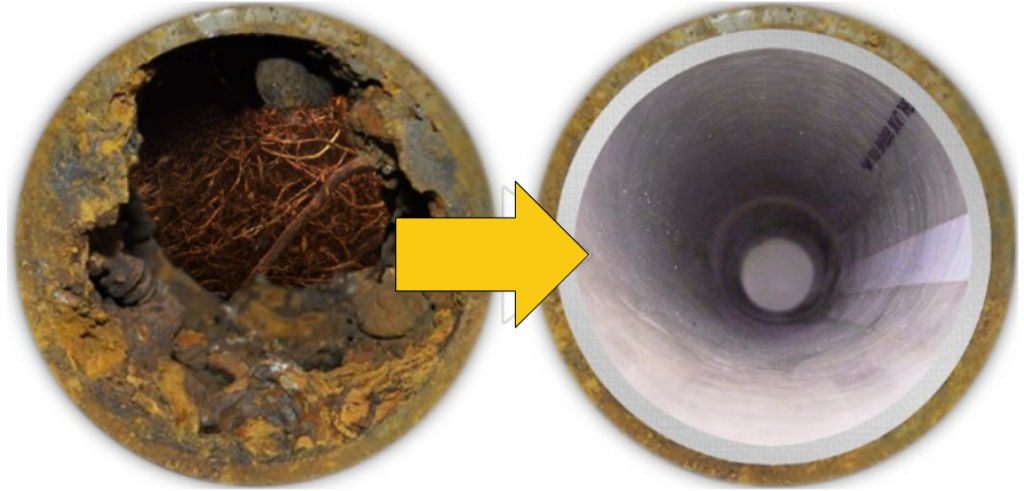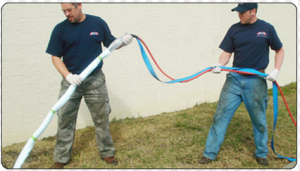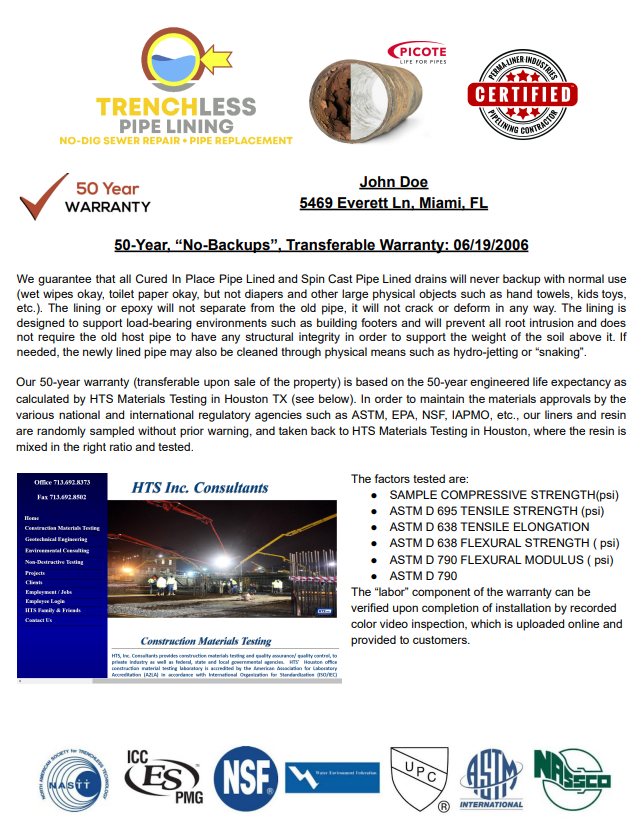In What Ways Can You Fix Underground Pipes Without Excavation?

Fixing Cast Iron Pipes Using Trenchless Pipe Lining
There Are Two Popular Types Of Trenchless Pipe Lining!
Our technology has been around since 1997. Most people don’t know about it, but it is called cured in place pipe lining (older technology), and epoxy pipe lining (newer and better). It simply installs inside the old pipe. It doesn’t matter if there are holes and cracks; it fills those in.
Both have a minimum engineered life of 50 years. Our warranty is 50 years to match the engineered life. When we’re done, we make a video recording of all the light pipes. We upload them online and send you one email with your 50-year transferable warranty, which means it can go to somebody else who buys the home in the future. You also receive the videos in that email, and you’ll receive a payment for the invoice. It takes about four days to do. That’s it.

What Are The Steps In Trenchless Pipe Lining?
Trenchless epoxy pipe lining is a process used to rehabilitate existing cast iron pipes without the need for traditional excavation methods. Here’s how it works:
Inspection: The first step in the process is to inspect the pipeline to determine the extent of the damage and identify any blockages or obstructions that may need to be cleared.
Cleaning: Next, the pipeline is thoroughly cleaned using high-pressure water jets or other specialized equipment to remove any debris or buildup.
Lining Preparation: After cleaning, the pipe is inspected again to ensure that it is clean and free of obstructions. Then, the epoxy resin liner is prepared according to the manufacturer’s instructions.
Lining Installation: The epoxy liner is inserted into the pipe and positioned using a specialized inversion system. The liner is then inflated and cured using hot water, steam, or UV light.
Inspection and Testing: Once the liner has cured, the pipe is inspected again to ensure that the liner is properly installed and that there are no leaks or other defects.
Restoration: The final step is to restore the pipeline to its original condition. This may include repairing any connections or fittings, as well as restoring any landscaping or pavement that was disturbed during the installation process.
Overall, trenchless epoxy pipe lining is a cost-effective and efficient way to rehabilitate pipelines without the need for excavation, making it an ideal solution for a wide range of applications.

How Much Does Epoxy Pipe Lining Cost?
So how much does it cost to reline pipes for a 2,000 square foot house instead of replacing the pipes?
It’s between $17,000 and $20,000. If you were to excavate the floors to physically replace the pipes it would take about two months and you would have to pay between $50,000 and $70,000.
It only takes 3 days to line the pipes, and we email you copies of the final videos of the re-lined pipes with your 50-year transferable warranty and your paid in full invoice. You get that all in one email. You can never lose any of that, and you can just forward that email to somebody who buys it properly in the future.
About Our 50-Year Warranty
What are the pros of pipe lining?
Firstly, it only takes about a day to install the new 50-year warranty inner pipe. It is a load-bearing pipe and is made of 100% pure epoxy, and the old pipe can corrode and disappear.
The epoxy is completely inert, which means it cannot react with acids, alkalines, or volatile substances like nail polish remover. The epoxy is engineered to last for 50 years and comes with a transferable warranty that can be passed on to new homeowners if the house is sold.
A final video recording of all the lined pipes is made and uploaded online and sent to the customer, along with a 50-year warranty made out in the homeowner’s name with the paid-in-full invoice. The warranty is transferrable, which means that if the house gets sold, it goes to the new homeowner.

